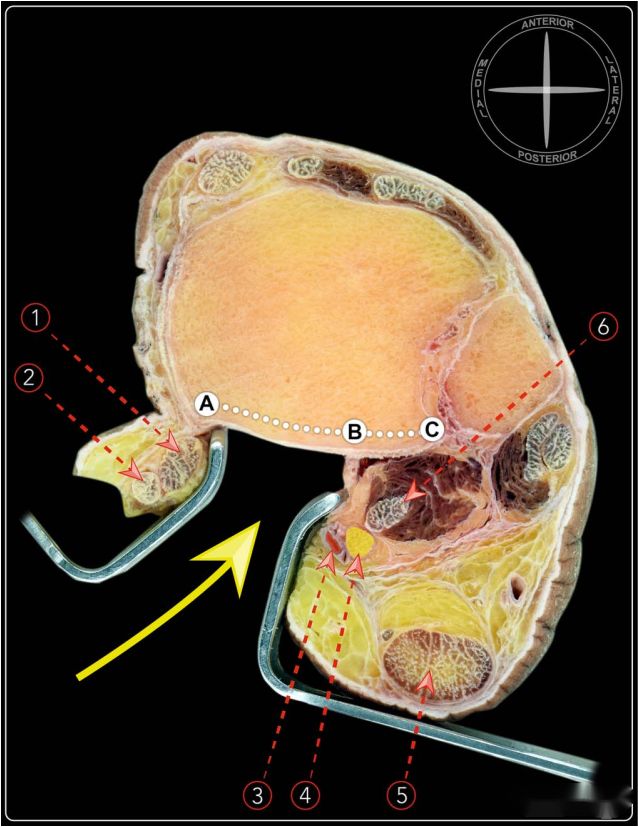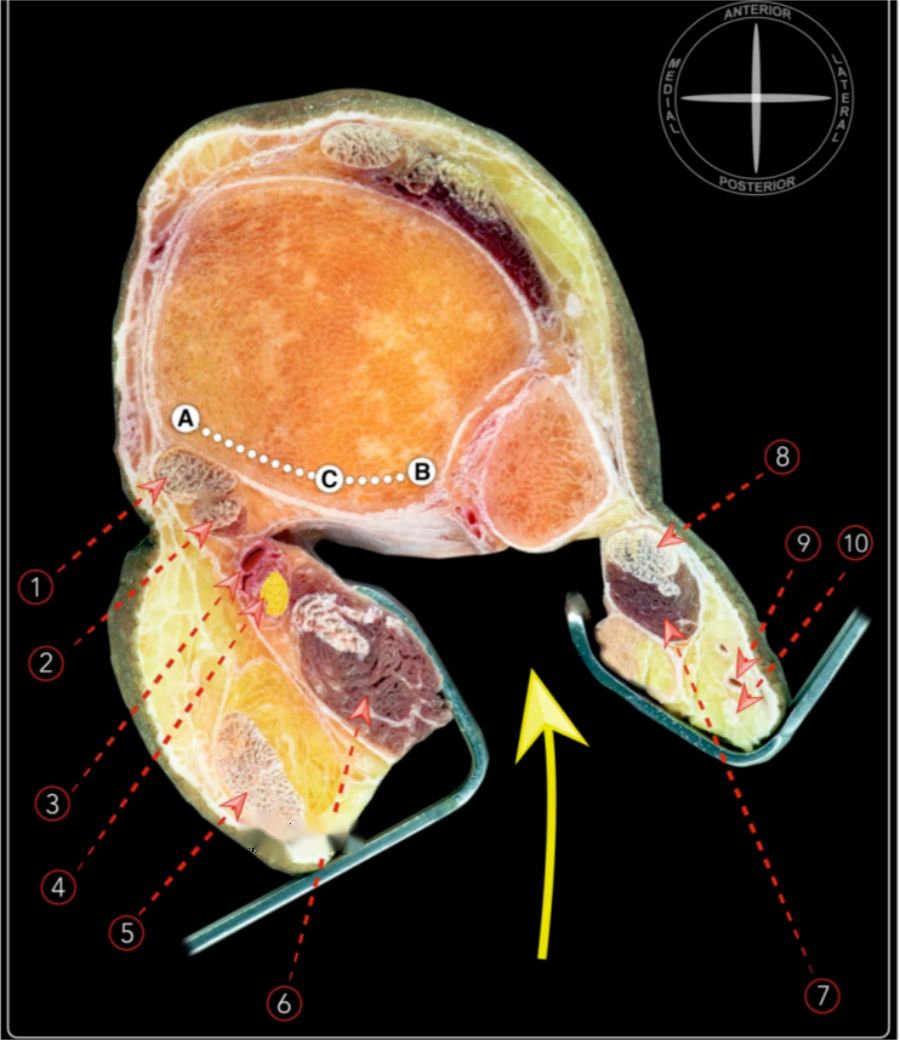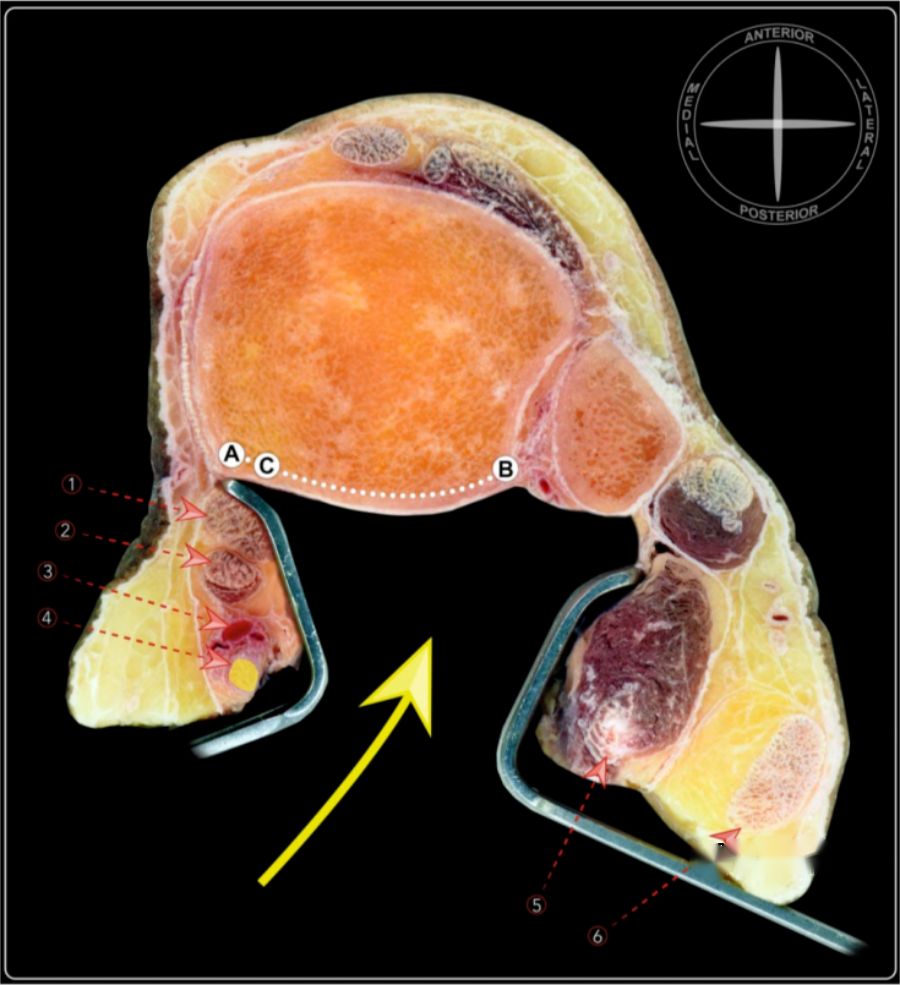Fractures of the ankle joint caused by rotational or vertical forces, such as Pilon fractures, often involve the posterior malleolus. The exposure of the “posterior malleolus” is currently achieved through three main surgical approaches: the posterior lateral approach, posterior medial approach, and modified posterior medial approach. Depending on the type of fracture and the morphology of the bone fragments, a suitable approach can be chosen. Foreign scholars have conducted comparative studies on the exposure range of the posterior malleolus and the tension on the vascular and neural bundles of the ankle joint associated with these three approaches.
Fractures of the ankle joint caused by rotational or vertical forces, such as Pilon fractures, often involve the posterior malleolus. The exposure of the “posterior malleolus” is currently achieved through three main surgical approaches: the posterior lateral approach, posterior medial approach, and modified posterior medial approach. Depending on the type of fracture and the morphology of the bone fragments, a suitable approach can be chosen. Foreign scholars have conducted comparative studies on the exposure range of the posterior malleolus and the tension
on the vascular and neural bundles of the ankle joint associated with these three approaches.
1. Posterior Medial Approach
The posterior medial approach involves entering between the long flexor of the toes and the posterior tibial vessels. This approach can expose 64% of the posterior malleolus. The tension on the vascular and neural bundles on the side of this approach is measured at 21.5N (19.7-24.1).
▲ Posterior Medial Approach (Yellow Arrow). 1. Posterior tibial tendon; 2. Long flexor tendon of the toes; 3. Posterior tibial vessels; 4. Tibial nerve; 5. Achilles tendon; 6. Flexor hallucis longus tendon. AB=5.5CM, posterior malleolus exposure range (AB/AC) is 64%.
2. Posterior Lateral Approach
The posterior lateral approach involves entering between the peroneus longus and brevis tendons and the flexor hallucis longus tendon. This approach can expose 40% of the posterior malleolus. The tension on the vascular and neural bundles on the side of this approach is measured at 16.8N (15.0-19.0).
▲ Posterior Lateral Approach (Yellow Arrow). 1. Posterior tibial tendon; 2. Long flexor tendon of the toes; 4. Posterior tibial vessels; 4. Tibial nerve; 5. Achilles tendon; 6. Flexor hallucis longus tendon; 7. Peroneus brevis tendon; 8. Peroneus longus tendon; 9. Lesser saphenous vein; 10. Common fibular nerve. AB=5.0CM, posterior malleolus exposure range (BC/AB) is 40%.
3. Modified Posterior Medial Approach
The modified posterior medial approach involves entering between the tibial nerve and the flexor hallucis longus tendon. This approach can expose 91% of the posterior malleolus. The tension on the vascular and neural bundles on the side of this approach is measured at 7.0N (6.2-7.9).
▲ Modified Posterior Medial Approach (Yellow Arrow). 1. Posterior tibial tendon; 2. Long flexor tendon of the toes; 3. Posterior tibial vessels; 4. Tibial nerve; 5. Flexor hallucis longus tendon; 6. Achilles tendon. AB=4.7CM, posterior malleolus exposure range (BC/AB) is 91%.
Post time: Dec-27-2023














